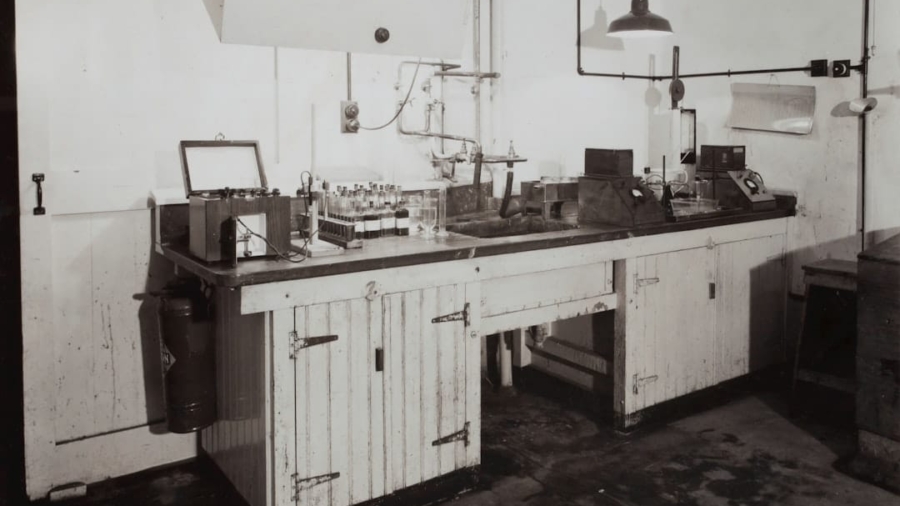The integration of artificial intelligence (AI) into the realm of healthcare has ushered in a transformative era, particularly in the field of oncology. Early cancer detection is critical for improving patient outcomes, as it significantly increases the chances of successful treatment and survival. Traditional methods of cancer screening, while effective, often rely on human interpretation and can be subject to error or oversight.
AI technologies, with their ability to process vast amounts of data and identify subtle patterns, are emerging as powerful tools in the early detection of cancer. By harnessing machine learning algorithms and deep learning techniques, researchers and clinicians are beginning to revolutionize how cancers are diagnosed, leading to earlier interventions and better prognoses. The potential of AI in early cancer detection is not merely theoretical; numerous studies and clinical trials have demonstrated its efficacy across various types of cancer.
From breast and lung cancers to skin malignancies, AI systems are being developed to analyze medical data with unprecedented precision. These systems can assist radiologists and pathologists by flagging suspicious lesions or anomalies that may otherwise go unnoticed. As the technology continues to evolve, the hope is that AI will not only enhance diagnostic accuracy but also streamline workflows, reduce costs, and ultimately save lives.
Key Takeaways
- AI is revolutionizing early cancer detection by identifying patterns and anomalies that may not be visible to the human eye.
- AI improves accuracy and efficiency in cancer screening, leading to earlier detection and better patient outcomes.
- Medical imaging analysis is being transformed by AI, allowing for more precise and timely detection of cancerous growths.
- AI has the potential to predict cancer risk and progression, enabling proactive and personalized treatment plans.
- Despite its potential, AI in early cancer detection faces challenges and limitations, such as data bias and interpretability issues.
The Role of AI in Identifying Patterns and Anomalies
At the heart of AI’s capabilities in early cancer detection lies its proficiency in identifying patterns and anomalies within complex datasets. Machine learning algorithms are trained on large volumes of historical medical data, enabling them to recognize subtle variations that may indicate the presence of cancer. For instance, convolutional neural networks (CNNs), a class of deep learning models, have shown remarkable success in analyzing medical images.
These networks can learn to differentiate between benign and malignant tumors by examining pixel-level details that may escape human observers. One notable example is the use of AI in mammography for breast cancer detection. Studies have shown that AI algorithms can outperform human radiologists in identifying breast lesions, particularly in dense breast tissue where traditional imaging techniques may struggle.
By analyzing thousands of mammograms, AI systems can learn to detect microcalcifications and other indicators of early-stage cancer with a high degree of accuracy. This capability not only aids in early diagnosis but also reduces the rate of false positives, which can lead to unnecessary anxiety and invasive procedures for patients.
AI’s Impact on Improving Accuracy and Efficiency in Cancer Screening

The implementation of AI in cancer screening processes has led to significant improvements in both accuracy and efficiency. Traditional screening methods often involve a labor-intensive review process, where radiologists must manually examine each image for signs of cancer. This can be time-consuming and prone to human error, especially when faced with high volumes of cases.
AI systems can automate much of this process, allowing for rapid analysis of imaging data while maintaining high levels of accuracy. For example, a study published in the journal “Nature” demonstrated that an AI model trained on mammography data could reduce false negatives by 9.4% compared to human radiologists. This reduction is crucial because false negatives can delay diagnosis and treatment, potentially leading to worse outcomes for patients.
Furthermore, by assisting radiologists in prioritizing cases that require immediate attention, AI can help streamline workflows in busy clinical settings, ensuring that patients receive timely care. Moreover, the efficiency gains from AI integration extend beyond just image analysis. In pathology, AI algorithms can analyze biopsy samples at a speed and scale that far exceeds human capabilities.
By automating the identification of cancerous cells within tissue samples, these systems can expedite the diagnostic process, allowing oncologists to make informed treatment decisions more quickly. This rapid turnaround time is particularly beneficial in acute care settings where timely intervention is critical.
The Use of AI in Analyzing Medical Imaging for Early Cancer Detection
Medical imaging plays a pivotal role in the early detection of cancer, and AI’s application in this area has been groundbreaking. Techniques such as magnetic resonance imaging (MRI), computed tomography (CT), and positron emission tomography (PET) scans generate vast amounts of data that can be challenging for human experts to interpret fully.
One prominent application is in lung cancer detection through CT scans. Researchers have developed AI models capable of analyzing lung nodules with a high degree of sensitivity and specificity. For instance, a study found that an AI system could detect lung cancer at an earlier stage than traditional methods by analyzing nodule characteristics such as size, shape, and growth patterns over time.
This capability allows for earlier intervention and potentially life-saving treatment options for patients.
Deep learning algorithms have been trained on thousands of images of skin lesions to distinguish between benign moles and malignant melanomas.
These systems can provide dermatologists with valuable second opinions, enhancing diagnostic confidence and reducing the likelihood of misdiagnosis.
AI’s Potential in Predicting Cancer Risk and Progression
Beyond immediate detection capabilities, AI holds promise in predicting an individual’s risk of developing cancer and monitoring disease progression over time. By analyzing a combination of genetic information, lifestyle factors, and medical history, machine learning models can identify individuals at higher risk for certain types of cancer. This predictive capability allows for targeted screening strategies and personalized prevention plans.
For example, researchers have developed algorithms that assess genetic markers associated with breast cancer risk. By analyzing genomic data from large cohorts, these models can stratify women based on their likelihood of developing breast cancer within specific timeframes. Such insights enable healthcare providers to recommend more frequent screenings or preventive measures for high-risk individuals.
Moreover, AI’s predictive capabilities extend to monitoring patients already diagnosed with cancer. Machine learning models can analyze treatment responses by evaluating changes in imaging data or biomarker levels over time. This information can help oncologists tailor treatment plans based on how well a patient is responding to therapy, ultimately leading to more personalized care.
Challenges and Limitations of AI in Early Cancer Detection

Despite the promising advancements in AI for early cancer detection, several challenges and limitations remain that must be addressed before widespread implementation can occur. One significant hurdle is the need for high-quality training data. AI algorithms rely on large datasets to learn effectively; however, obtaining diverse and representative datasets can be challenging due to variations in demographics, imaging techniques, and disease presentations across different populations.
Additionally, there is a risk of overfitting when training AI models on limited datasets. Overfitting occurs when a model learns noise or random fluctuations in the training data rather than generalizable patterns applicable to new cases. This can lead to decreased performance when the model encounters real-world data that differs from its training set.
Another challenge lies in the interpretability of AI algorithms. Many advanced machine learning models operate as “black boxes,” meaning their decision-making processes are not easily understood by humans. In healthcare settings where trust and transparency are paramount, this lack of interpretability can hinder clinician acceptance and patient confidence in AI-driven recommendations.
Ethical and Privacy Considerations in AI-Driven Cancer Detection
The deployment of AI technologies in early cancer detection raises important ethical and privacy considerations that must be carefully navigated. One primary concern is patient consent and data privacy. The use of personal health information to train AI models necessitates robust safeguards to protect patient confidentiality.
Ensuring that data is anonymized and securely stored is essential to maintain trust between patients and healthcare providers. Moreover, there is a risk of bias in AI algorithms if they are trained on non-representative datasets. If certain demographic groups are underrepresented in training data, the resulting models may perform poorly for those populations, exacerbating existing health disparities.
It is crucial for developers to prioritize diversity in their datasets and continuously monitor algorithm performance across different demographic groups. Additionally, ethical considerations extend to the potential consequences of misdiagnosis or overdiagnosis resulting from AI-driven recommendations. While AI can enhance diagnostic accuracy, reliance on technology must be balanced with clinical judgment to avoid unnecessary interventions or anxiety for patients.
Future Prospects and Developments in AI for Early Cancer Detection
Looking ahead, the future prospects for AI in early cancer detection are promising as ongoing research continues to refine algorithms and expand their applications across various cancers. The integration of multi-modal data sources—combining imaging data with genomic information, electronic health records, and patient-reported outcomes—holds great potential for enhancing predictive accuracy and personalizing care. Furthermore, advancements in natural language processing (NLP) could enable AI systems to analyze unstructured clinical notes alongside structured data, providing a more comprehensive view of a patient’s health status.
This holistic approach could lead to earlier identification of at-risk individuals and more effective monitoring strategies for those already diagnosed. As regulatory bodies begin to establish guidelines for the use of AI in clinical practice, it will be essential for stakeholders—including researchers, clinicians, ethicists, and policymakers—to collaborate on best practices that ensure safe and equitable implementation. The ultimate goal is to harness the power of AI not only as a diagnostic tool but as an integral component of a patient-centered healthcare system that prioritizes early detection and improved outcomes for all individuals facing cancer diagnoses.
In the rapidly evolving field of healthcare, artificial intelligence is playing a pivotal role in transforming early cancer detection, offering unprecedented accuracy and efficiency. A related article that delves into the technological advancements in different sectors is Discover the Best Free Software for Home Remodeling Today. While this article focuses on home remodeling, it highlights the broader impact of technology in enhancing precision and accessibility, much like AI’s role in medical diagnostics. Both fields demonstrate how innovative software solutions are reshaping traditional practices, making them more effective and user-friendly.
FAQs
What is early cancer detection?
Early cancer detection refers to the identification of cancer at an early stage, when it is more treatable and has a higher chance of successful outcomes. Detecting cancer early can significantly improve a patient’s prognosis and increase the likelihood of successful treatment.
How is AI revolutionizing early cancer detection?
AI is revolutionizing early cancer detection by enabling more accurate and efficient analysis of medical imaging, such as mammograms, CT scans, and MRIs. AI algorithms can quickly and accurately identify potential signs of cancer, helping healthcare providers to detect cancer at earlier stages.
What are the benefits of using AI for early cancer detection?
Using AI for early cancer detection can lead to improved accuracy and efficiency in identifying potential cancerous lesions. This can result in earlier diagnosis, better treatment outcomes, and reduced healthcare costs. Additionally, AI can help alleviate the burden on healthcare professionals by assisting in the analysis of large volumes of medical imaging data.
Are there any challenges or limitations to using AI for early cancer detection?
Challenges and limitations of using AI for early cancer detection include the need for large, high-quality datasets for training AI algorithms, potential biases in the data used to train AI models, and the need for ongoing validation and refinement of AI algorithms to ensure their accuracy and reliability in clinical settings.
How is AI being integrated into clinical practice for early cancer detection?
AI is being integrated into clinical practice for early cancer detection through the development and deployment of AI-powered medical imaging analysis tools. These tools are used by radiologists and other healthcare professionals to assist in the interpretation of medical imaging studies and the identification of potential cancerous lesions.

